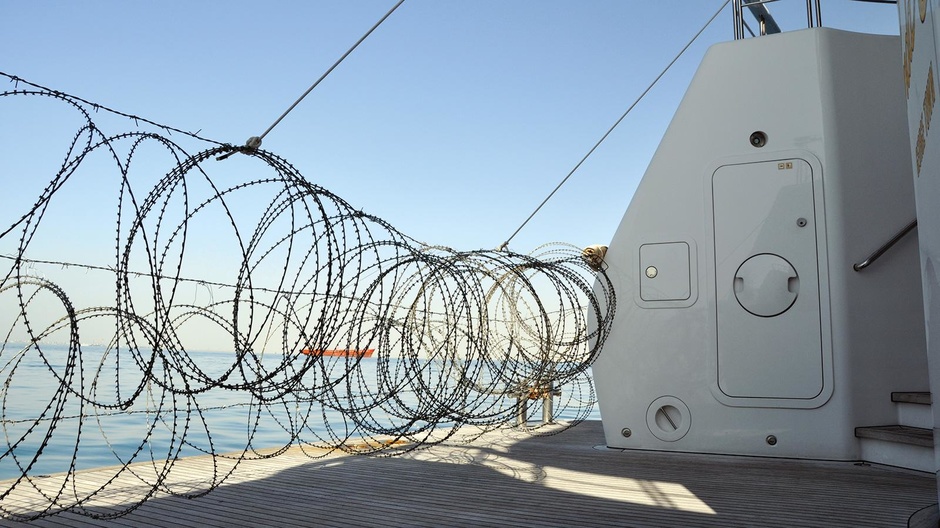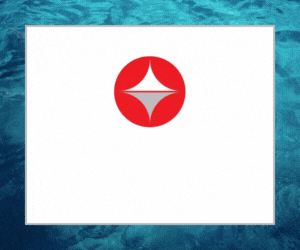An advisory notice has been issued with new guidelines for yachts regarding piracy and safety abroad. Those considering a passage through the Gulf of Aden, Yemeni and Somali waters should read this update

This is the fifth notice World Sailing (formerly ISAF) has published on this subject and is based on notes from MSCHOA (Maritime Security Centre – Horn of Africa). Read on to discover the most recent guidelines on preventing Pirate attacks when cruising…
Vessels that are travelling through the relevant areas are advised to read the notes prepared by MSCHOA which are as follows:
- Although the number of successful pirate attacks on merchant shipping in the area greatly reduced, the danger of piracy and consequent loss of life and property in the GoA (Gulf of Aden), Yemeni and Somali waters (up to 750 miles offshore) is high. Yachts are strongly recommended to avoid the area.
- Greater use of firearms in recent months indicates an increase in aggression and risk to all mariners in the area.
The security assessment of EUNAVFOR, MSCHOA and UKMTO concludes that:
- The threat remains unchanged in terms of the freedom of movement of Pirate Action Groups (PAG’s) in the wider Indian The area of high risk remains.
- The reduction in the number of successful attacks is explained by greater deployment of Private Armed Security Contractors (PASCs) on Merchant Shipping and increased disruptions by Naval Forces.
- The greater deployment of PASCs increases the threat to yachts. If ships become harder to capture then the PAG’s may well turn to more vulnerable targets such as yachts.
Danger of Piracy – a guideline for crew and yachts undertaking a passage through the Gulf of Aden, Yemeni and Somali waters.
“These notes are published in co-operation with the MSCHOA (Maritime Security Centre – Horn of Africa) set up by EU NAVFOR ATALANTA and UKMTO (UK Maritime Trade Organization). The notes are for guidance only and a final decision on whether to enter the Gulf of Aden or any waters where pirates operate and how to conduct a vessel in those waters remains entirely the responsibility of the master of each vessel. All vessels entering the area do so at their own risk”
1 – Threat
“The danger of piracy and consequent loss of life and property in the GoA (Gulf of Aden), Yemeni and Somali waters (up to 750 miles offshore), is high. Yachts are strongly recommended to avoid the area. The conclusions of current Threat Assessment reports state that the Somali-based pirate networks and their affiliates retain both the intent and capability to conduct acts of piracy.”
“Yachts which are slow and low are extremely vulnerable from opportunistic attacks, hijackings or armed robbery. The general security situation in the High Risk Area (HRA) remains unstable. Many coastal areas of Yemen are subject to maritime military operations conducted by the Saudi led coalition. Vessels that enter Yemeni Territorial Waters can expect to be hailed and challenged by coalition warships.”
2 – Registration
“MSCHOA liaises with anti-piracy patrols being conducted by warships from several nations in the area, and UKMTO coordinates the management of all merchant ship and yachts in the area. The patrols operate mainly in the Gulf of Aden and the Somali Basin but may operate anywhere within the area and will provide surveillance and support as far as possible to yachts. However no guarantee whatever can be offered as to the safe transit of any yacht through these waters, and no dedicated escort can be expected.”
“A yacht which, despite the risks described, decides to make a passage should advise her plans with as much notice as possible1 to UKMTO and MSCHOA and provide the information set out in the attached Yacht Vessel Movement Form, preferably by email but alternatively by telephone”
- UKMTO (UK Maritime Trade Organization) (Royal Navy) email: info@ukmto.org. Tel: +44 2392 222065 (General Enquiries)
- MSCHOA (EUNAVFOR Maritime Security Center – Horn of Africa) email: postmaster@mschoa.org. Tel: +33 298 220 220 / + 33 298 220 170
- US-flagged vessels may wish to contact NCAGS (Naval Cooperation and Guidance for Shipping) (US Navy) Bahrain email: ncags_bw@me.navy.mil. Tel+ 973 1785 1023 (Helplines)
Read More: Weekly Yacht Crew Travel News & Updates
3 – Attack patterns
“Pirates operate from very small craft, which limits their operation to moderate weather conditions. While no statistics exist, it is likely to be difficult to operate these small craft in sea states 3 and above, though operation in higher sea states cannot be ruled out. Pirates are less likely to launch attacks in the dark, and merchant ships try to pass through the area between 47E and 49E in the IRTC during the hours of darkness for this reason.”
“In a typical pirate attack small, high speed (up to 25knot) open boats deploy from a mother ship, often a pirated fishing vessel, or commonly two or more of these small high speed open boats are used in attacks, often approaching from either quarter of the intended target.”
4 – Preparations
“A vessel considering entering the area is recommended to carry UK Admiralty Anti-Piracy Planning Chart – Red Sea, Gulf of Aden and Arabian Sea.During her passage a yacht should monitor VHF 16 and VHF 8 and report by the means and at the intervals advised by UKMTO, or by a patrolling warship.”
“Carriage of arms is not advised. There is a serious risk of escalation of the levels of violence.”
“In the Somali Basin or further afield where there are fewer warships, an AIS transponder should be switched off unless the yacht is either aware of military forces in their vicinity or is under attack.”
“Ensure that all systems (in particular the engine) are in good shape, radios and sat phones are working properly, that you have plenty of fuel and the ship’s batteries are in good shape. Be prepared to motor or motor-sail at your maximum speed for the entire transit of the IRTC. Carry additional supplies (particularly water purification, medical supplies and vitamin supplements) in the event that you are unfortunate enough to be pirated.”
Bear in mind:
- Split up money into different caches.
- Keep electronic copies of your passport etc. on yahoo- or google-type accounts with spurious names – if your original papers are lost you can access the copies from any police station or internet café.
- Consider carrying only copies (not originals) of essential documents on the boat.
- Consider having two passports (a legitimate exercise for e.g. business travellers).
- Wear a cheap watch.
- Have an old mobile phone.
- Keep only old (out of date) credit cards in your wallet.
- (If ashore) wear only such clothing that you can afford to lose.
- Advise your next of kin if you are going into a dangerous area so they are prepared to deal with matters if the worst happens – they should know in advance which authorities to talk to.
- Thorough mental preparation is essential – think through all the scenarios. Continuous vigilance and an early call to the authorities if in doubt, is recommended as the arrival of military units (by sea or air) or a VHF call to a warship (even if you cannot see a warship) may cause an impending attack to be called If you can delay the pirates from boarding by even 15 minutes, it may give the warships time to react.
5 – Under Attack
“If under attack a ‘mayday’ call should be made using VHF or HF DSC, VHF 16 or VHF 8, Sat-C or any other means. Also, please contact UKMTO by telephone and pass your last known position.”
“Report immediately to UKMTO by telephone if possible on +44 (0) 2392 222060 (24 hours watch) – please make sure you know your position. If possible, the call to UKMTO should be followed by a call to MSCHOA, and NCAGS Bahrain (who focus on US-flagged vessels).”
6 – Pirates On Board
“Stay calm – attackers are likely to be excitable and nervous – you will think more clearly and your conduct may also calm them – do not make sudden movements. Stay together as far as it is practicable to do so. Offer no resistance. Cooperate with the pirates.”
“Do not use firearms, even if available – the risk of escalation is significant. Do not use flares or other pyrotechnics as weapons against pirates.”
“Do not use flash photography, which may be mistaken for muzzle flashes by the pirates or by any military force sent to assist.”
“In the event that military personnel take action on board the vessel, unless otherwise directed all crew members should keep low to the deck, cover their head with both hands (always ensuring that both hands are empty and visible). Be prepared to answer questions on identity and status as military personnel will need to differentiate quickly between crew and pirates.”
Summary
In the High Risk Area, international naval forces continue to suppress piracy activity. In spite of this, recent incidents remind us that piracy still persists. Maritime criminals target yacht crews very often. In the event that the crew is captured, they may be subjected to brutal treatment as captives, therefore guidelines must be followed carefully. To read more on this subject, visit
Keep up to date with the most recent Superyacht Content News by signing up to our Newsletter…







.gif)



.gif)







